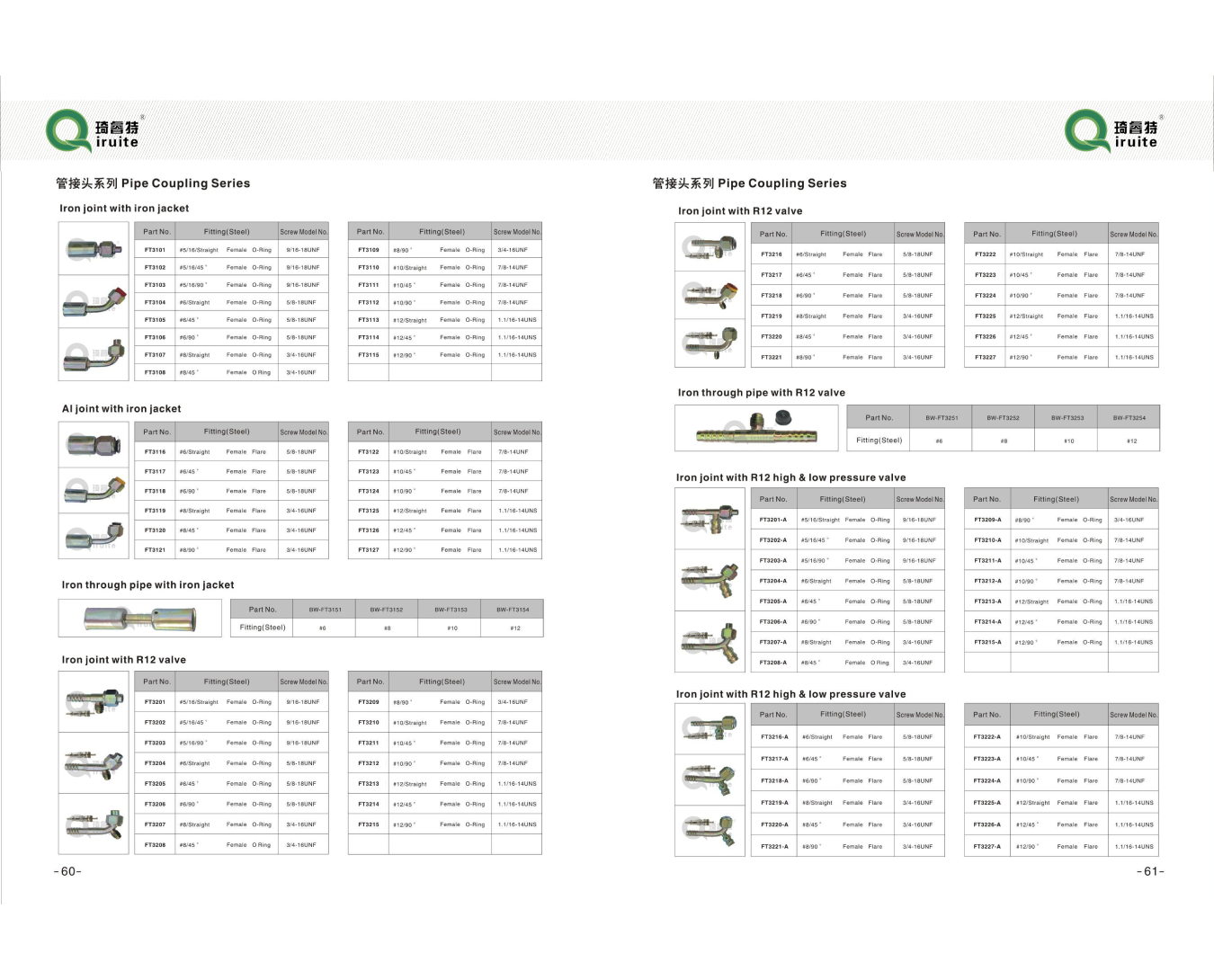R134a Charging Hose - Efficient Refrigerant Charging Solutions
Understanding R134a Charging Hoses A Comprehensive Guide
R134a, also known as tetrafluoroethane, is a refrigerant commonly used in automotive air conditioning systems and refrigeration applications. It replaced the older R12 refrigerant due to environmental concerns associated with ozone depletion. One critical component in the maintenance and servicing of R134a systems is the charging hose. This article explores the significance of R134a charging hoses, their construction, usage, and best practices for ensuring efficient and safe charging of refrigerant.
What is an R134a Charging Hose?
An R134a charging hose is a specialized tool designed for connecting refrigerant containers to the air conditioning system in vehicles or refrigeration units. These hoses are equipped with fittings that match the R134a ports, allowing for a secure connection. Typically, they come in various lengths and are distinguished by their blue and red color coding—blue usually signifies low pressure, while red indicates high pressure—making it easier to identify correct usage.
Construction and Features
R134a charging hoses are constructed from durable materials that withstand the high pressures associated with refrigerants. They often feature a rubber or flexible polyurethane outer layer, reinforced with braided nylon or other materials for added strength. The fittings at each end are designed for easy connection and disconnection, equipped with Schrader valves to prevent refrigerant leakage.
Many modern charging hoses come with a gauge attached, allowing technicians to monitor the pressure of the refrigerant in real-time. This feature is essential to ensure that the system is charged correctly, preventing overcharging or undercharging, both of which can lead to system inefficiencies or even damage.
r134a charging hose

Proper Usage
Before using an R134a charging hose, it is vital to ensure that the system is off and the car’s engine is cool. Begin by connecting the low-pressure side (blue) to the low-pressure port on the system and the high-pressure side (red) to the high-pressure port. Always check for leaks before starting the charging process. Once everything is securely attached, you can begin adding refrigerant as needed.
It is crucial to follow manufacturer specifications regarding the amount of refrigerant to use. Overcharging can lead to compressor failure, while undercharging can result in poor cooling performance. Always consult the vehicle's service manual for precise guidelines.
Safety Considerations
While charging a refrigerant system, safety should be a priority. Always wear protective gloves and goggles, and ensure that you are working in a well-ventilated area. Avoid exposing refrigerants to high heat or open flames, as they can be harmful if inhaled. Moreover, never dispose of refrigerants improperly—follow local regulations for proper disposal.
Conclusion
R134a charging hoses are indispensable tools in the realm of automotive air conditioning and refrigeration. Understanding their function, construction, and proper usage ensures that technicians can efficiently maintain cooling systems while promoting safety and compliance with environmental standards. By following best practices and being aware of safety considerations, you can ensure that your refrigerant charging process is both effective and responsible.
-
Ultimate Spiral Protection for Hoses & CablesNewsJun.26,2025
-
The Ultimate Quick-Connect Solutions for Every NeedNewsJun.26,2025
-
SAE J1401 Brake Hose: Reliable Choice for Safe BrakingNewsJun.26,2025
-
Reliable J2064 A/C Hoses for Real-World Cooling NeedsNewsJun.26,2025
-
Heavy-Duty Sewer Jetting Hoses Built to LastNewsJun.26,2025
-
Fix Power Steering Tube Leaks Fast – Durable & Affordable SolutionNewsJun.26,2025

